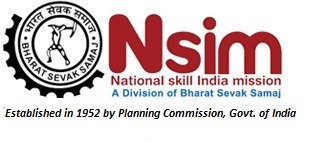A major challenge for developing economies, such as India, has been determining the supply and demand of skilled manpower in the labour market. As these economies integrate further with the international economy, it becomes imperative that the most relevant information relating to the demand and supply of skilled labour is readily available in order to take policy decisions concerning the development of a more highly skilled workforce. Governments are increasingly taking steps to strengthen the Labour Market Information System (LMIS) to improve the flow of data and information to employers and jobseekers, and to improve planning for the supply of skills.
A major challenge for developing economies, such as India, has been determining the supply and demand of skilled manpower in the labour market. As these economies integrate further with the international economy, it becomes imperative that the most relevant information relating to the demand and supply of skilled labour is readily available in order to take policy decisions concerning the development of a more highly skilled workforce. Governments are increasingly taking steps to strengthen the Labour Market Information System (LMIS) to improve the flow of data and information to employers and jobseekers, and to improve planning for the supply of skills.
A major challenge for developing economies, such as India, has been determining the supply and demand of skilled manpower in the labour market. As these economies integrate further with the international economy, it becomes imperative that the most relevant information relating to the demand and supply of skilled labour is readily available in order to take policy decisions concerning the development of a more highly skilled workforce. Governments are increasingly taking steps to strengthen the Labour Market Information System (LMIS) to improve the flow of data and information to employers and jobseekers, and to improve planning for the supply of skills.
A major challenge for developing economies, such as India, has been determining the supply and demand of skilled manpower in the labour market. As these economies integrate further with the international economy, it becomes imperative that the most relevant information relating to the demand and supply of skilled labour is readily available in order to take policy decisions concerning the development of a more highly skilled workforce. Governments are increasingly taking steps to strengthen the Labour Market Information System (LMIS) to improve the flow of data and information to employers and jobseekers, and to improve planning for the supply of skills.
A major challenge for developing economies, such as India, has been determining the supply and demand of skilled manpower in the labour market. As these economies integrate further with the international economy, it becomes imperative that the most relevant information relating to the demand and supply of skilled labour is readily available in order to take policy decisions concerning the development of a more highly skilled workforce. Governments are increasingly taking steps to strengthen the Labour Market Information System (LMIS) to improve the flow of data and information to employers and jobseekers, and to improve planning for the supply of skills.
